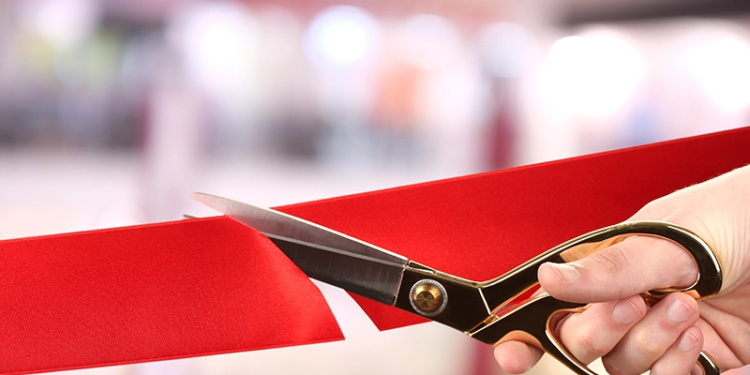
When the spinal cord is damaged (black area), the nerve cell extensions are severed. The nerve cells stop growing and enlarge. Scientists can now show that regeneration is nevertheless possible.Photograph courtesy of Max Planck Institute for Neurobiology/Bradke.
Damaged nerve cells in a finger will regrow, but those in the spinal cord generally don’t. Why the difference? An international team of researchers led by scientists at the Max Planck Institute for Neurobiology, Martinsried, Germany, can now explain two important details: damaged nerve cells in the spinal cord actually can regrow even many weeks after an injury; however, the regeneration is usually prevented by post-injury scarring. (Ylera B, Ertürk A, Hellaf F, Nadrigny F, Hurtado A, Tahirovic S, et al. “Chronically CNS-injured adult sensory neurons gain regenerative competence upon a lesion of their peripheral axon.” Current Biology. June 2009.)
Growth or Standstill
A small cut in a finger hurts, but within a few days, the wound heals, and the body repairs the damaged skin cells, muscle fibers, blood vessels, and any severed nerve cells. But why do these amazing powers of self-healing fail when the damage is to the central nervous system (CNS)-the brain or spinal cord?
There are some exceptions to the rule that CNS nerves don’t regrow. The extensions of certain nerve cells reach into both the central and the peripheral nervous systems. If these cells are damaged, they behave exactly like their neighboring cells: in the peripheral area, the extensions regenerate after a short time, but in the central area they do not. However, if the cell is injured first in the peripheral and then in the central area, it can regenerate the section of itself that’s in the CNS. This shows that, in principle, nerve cells in the CNS can recover from injury. The Planck Institute said that this fact had thus far been “of no significance for treating patients, since damaging peripheral nerve cells as a preventative measure is not an option.” And, until now, it was believed that if the nerve-cell extensions were damaged in the reverse order, no growth in the CNS could take place.
Dormant Potential for Growth
Over the past 20 years, scientists have believed that it would only be possible for damaged CNS nerve cells to regrow if the cells were previously “prepared” by a peripheral injury. However, it remained unclear to scientists whether the CNS’s brake on growth originated in the cells themselves or with a substance in the CNS environment. What has recently been discovered is that injury to a cell in the peripheral area activates genes that are linked to cell growth. These genes are not activated when there is scission in the central area, probably because a number of substances in the CNS prevent it.
“Following a peripheral injury, the cell takes up a ‘start position’ and can start to grow straightaway if injury to the central nervous system occurs,” explained Frank Bradke, PhD, who, together with his team, is investigating the reason for these differing growth abilities.
In a recent experiment, Bradke’s team demonstrated that nerve cells in the CNS still have the ability to regenerate many weeks after an injury occurs. Bradke’s team damaged a nerve cell in the CNS area and left it unhealed. Then, they later cut the cell in the peripheral area as well, activating the growth gene. Finally, they damaged the cell a second time in the CNS area, and, it grew again, no matter how many weeks had elapsed between the first and second CNS injury.
Scar Tissue Forms a Barrier
So, if CNS nerve cells can regrow even weeks after the spinal cord has sustained damage, why do they not always do so when stimulated with a peripheral cut? The Max Planck researchers speculated that it may be due to the scar tissue that forms five days after an injury to the spinal cord. To investigate this, they used a technique requiring dexterity and sensitivity. Normally, even a very small injury severs hundreds of nerve cells. Using a two-photon laser, the neurobiologists were able to sever the extensions of individual nerve cells in the CNS. No scar tissue formed on the tiny injuries and the CNS nerve cells regenerated after a few days.
Important Basis
“Even if we can’t move straight to developing new therapies from this point, these results provide an important basis for subsequent studies,” Bradke said. “First of all, it is now clear that damaged nerve cells can still regenerate after a long period of time if they are stimulated in the correct way. Secondly, we also know that activating the growth genes is not sufficient on its own to make nerve cells in the central nervous system grow again. For successful regeneration, we have to prevent the formation of scar tissue or at least reduce it.” The institute asserts that with this knowledge, scientists can now begin to develop methods that reinforce the positive effects of the genes and cause less scar tissue to form.




